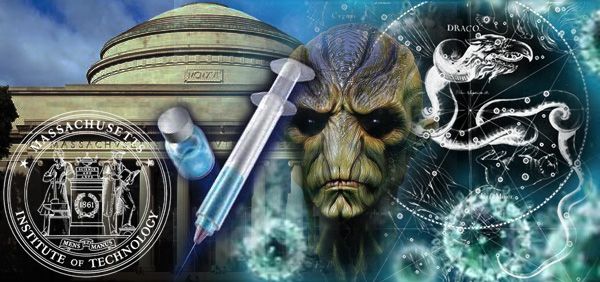Bioquark Inc. (www.bioquark.com) Interview in MoneyWeek
Read whole story: http://moneyweek.com/who-wants-to-live-forever/

Bioquark Inc. (www.bioquark.com) Interview in MoneyWeek
Read whole story: http://moneyweek.com/who-wants-to-live-forever/

Anyone who does not have QC as part of their 5+Yr Roadmap for IT are truly exposing their company as well as shareholders and customers. China, Russia, Cartels, DarkNet, etc. will use the technology to extort victims, destroy companies, economies, and complete countries where folks have not planned, budget, skilled up, and prep for full replacement of their infrastructure and Net access. Not to mention companies who have this infrastructure will provide better services/ CCE to svc. consumers.
In a recent article, we highlighted a smart beta ETF called the “Sprott BUZZ Social Media Insights ETF” that uses artificial intelligence (AI) to select and weight stocks. If we stop and think about that for a moment, that’s a pretty cool use of AI that seems well ahead of its time. Now we’re not saying that you should go out and buy this smart beta ETF right away. It uses social media data. We know that on social media, everyone’s an expert and many of the opinions that are stated are just that, opinions. However some of the signals may be legitimate. Someone who just bought Apple is likely to go on telling everyone how bullish they are on Apple shares. Bullish behavior is often accompanied by bullish rhetoric. And maybe that’s exactly the point, but the extent to which we’re actually using artificial intelligence here is not that meaningful. Simple scripting tools go out and scrape all this public data and then we use natural language processing (NLP) algorithms to determine if the data artifacts have a positive or negative sentiment. That’s not that intelligent, is it? This made us start to think about what it would take to create a truly “intelligent” smart beta ETF.
What is Smart Beta?
We have talked before about how people that work in finance love to obfuscate the simplicity of what they do with obscure acronyms and terminology. Complex nomenclature is suited for sophisticated scientific domains like synthetic biology or quantum computing but such language is hardly merited for use in the world of finance. We told you before what beta is. Smart beta is just another way of saying “rules based investing” which has in fact been around for centuries, but of course we act like it’s new and start publishing all kinds of research papers on it. In fact, a poll offered up by S&P Capital IQ shows that even 1 out of 4 finance professionals recognizes the term “smart beta” to be little more than a marketing gimmick:

The field, or at least the widely used term, of synthetic biology (synbio) started nearly two decades ago. As the field has matured, two PLoS ONE papers have analyzed the publishing data to look at trends, language, and connections among synbio researchers. This data provides snapshots of who’s publishing, what kind of research is being published, when it’s being published, and where it’s being published. The question of why is certainly open for interpretation but the growth dynamics of synthetic biology publishing can give some sense of why a the term has stuck as a useful unifying term.
In 2012, researchers used Thomson Reuters Web of Science publishing data to map where people are publishing synbio research, how those people are connected, and who’s funding it. More recently, three French researchers also used data from the Thomson Reuters Web of Science to assess how synthetic biology the different areas of synthetic biology have grown and interacted.
Both of these papers draw interesting pictures of how new terms and ideas spread within an new umbrella term for a kind of research. Together these two papers paint give us some answers to the ‘Who, What, When, Where, & Why’ of synthetic biology.

Why compliance exist.
Gingko Bioworks launched their new laboratory last month—an automated “factory” that mass-produces genetically modified organisms. The organism company’s tagline is “Biology By Design,” and it aims to deliver just that in their second foundry, which is equipped with numerous robots that mash together huge batches of genes to churn out new and exotic lifeforms […] Gingko is ambitiously working through the complexities of biology and genetics to create these experimental organisms. The company boasts of a design-build-test cycle: gene-enzyme mixes designed from the company’s scientific database is put together in a hundred different ways, and the “mashup” that services a client’s needs best is accepted as the new organism’s genetic profile. Their new liquid-handling robots like the Echo 525 make large-scale experimentation possible. (READ MORE)




Tissue engineering makes further progress for repairing damaged joints.
Writing in The Lancet, Swiss doctors report that cartilage cells harvested from patients’ own noses have been used to successfully produce cartilage transplants for the treatment of the knees of 10 adults (aged 18–55 years) whose cartilage was damaged by injury. Two years after reconstruction, most recipients reported improvements in pain, knee function, and quality of life, as well as developing repair tissue that is similar in composition to native cartilage.
Despite this promising start, however, the effectiveness of the procedure needs to be rigorously assessed in larger randomised trials compared to conventional treatments and with longer follow up before any firm conclusions can be drawn about its use in routine clinical practice, say the authors.
Every year, around 2 million people across Europe and the USA are diagnosed with damage to articular cartilage because of injuries or accidents. Articular cartilage is the tissue on the end of a bone that cushions the surface of the joint and is vital for painless movement. Because the tissue doesn’t have its own blood supply, it has limited capacity to repair itself once damaged, leading to degenerative joint conditions like osteoarthritis. Traditional methods to prevent or delay onset of cartilage degeneration following traumatic events like microfracture surgery don’t create the healthy cartilage needed to endure the forces of everyday movement. Even novel medical advances using patients’ own articular cartilage cells (chondrocytes) have been unable to predictably restore cartilage structure and function in the long term. As the population ages and people live longer, there is an urgent and growing need to develop an effective therapy to repair cartilage damage.


Using cells from the cartilage in patients’ noses, Swiss doctors have successfully made patches to treat 10 adults whose knee cartilage was damaged by injury.
Two years after the transplants, most of the patients grew new cartilage in their knees and reported improvements in pain, knee function and quality of life.
“We have developed a new, promising approach to the treatment of articular cartilage injuries,” said lead researcher Ivan Martin, a professor of tissue engineering at the University of Basel. The articular cartilage is the tissue that covers and protects the ends of the knee bones, and injuries to it can lead to degenerative joint conditions like osteoarthritis.
